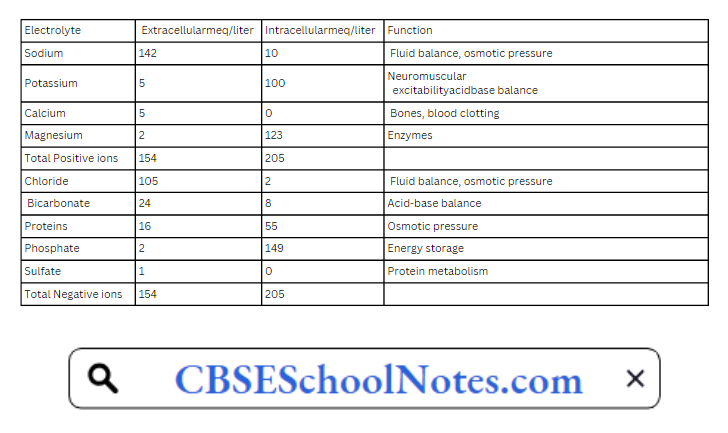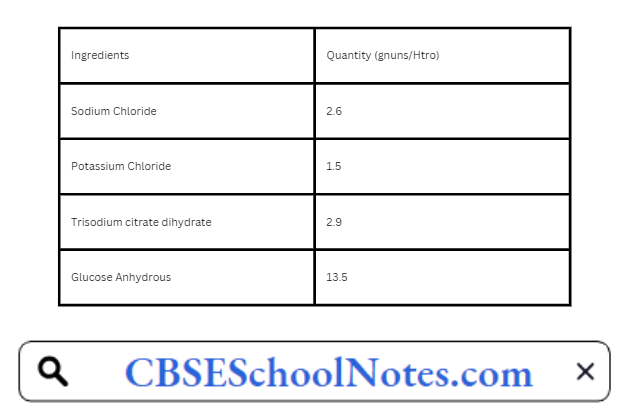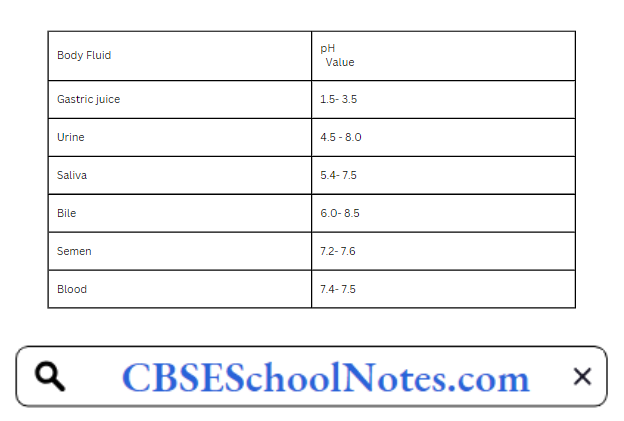Major Extra And Intracellular Electrolytes Introduction
Electrolyte is a substance that ionizes when dissolved in a suitable ionizing solvents such as water. This includes most soluble acids, bases and gases. An electrolyte may be
defined as concentrated if it has high concentration of ions or dilute if it has low concentration of ions.
Electrolytes are used in replacement therapy and for the correction of acid-base balance in various body fluids. The electrolyte concentration of body fluids have been different in
various body fluid compartments. The various body fluid compartments are:-
1) Intracellular fluid:- This is the fluid which is present inside cell E.g. Cytoplasm. It constitutes 12-15% of body weight and its volume is 30 litres.
2) Extracellular fluid:- This is the fluid which is present between the cells E.g. Blood plasma. This constitutes 12-15 % of body weight and its volume is 10 litres.
3) Plasma (vascular) fluid:- This is the fluid which is present within the blood vascular system. This constitutes 4-5% of body weight and its volume is 3-5 litres.
The major electrolytes found in the body are:- Calicum, Potassium, Phosphate, Iron, Magnesium, Chloride, Sodium.
Read and Learn More Pharmaceutical Inorganic Chemistry Notes
Major Physiological Ions
Calicum:- Calicum is an important constitutent of bones and teeth. It is also concerned with the functioning of muscles and clotting mechanism of blood .The main sources of Cal
cium include milk, cheese, green vegetables, egg and fish.
Magnesium:- The total magnesium content in body is about 25 gram of magnesium and the daily requirement is 350 mg. The main sources of magnesium include nuts, soyabeans, wholegrains, seafoods.
It is used for protein synthesis and for the smooth functioning of the neuromuscular system. Its deficiency cause personality changes, loss in body weight and cardiac disturbances. It is the second most cation in concentration in the intracellular fluid compartment.
Chloride:- It is the major extracellular anion. The total chloride ion present in the body is about 50mEq per body weight and body daily requirement is about 5-10 gm as sodium chloride.
The main source of chloride required for the body is table salt which is used in cooking. Chloride ion is excreted through the urine and through the skin during sweating. It is required for maintaining proper hydration, osmotic pressure and normal cation-anion balance.
Potassium:- It is the major intracellular cation present as about 23 times higher than present in the extracellular fluid in the human body. Human body has about 2.6 per kg weight of potassium.
The main source of potassium in food includes milk, certain vegetables, meat and whole grains. Potassium ions are used to maintain the electrolyte composition of various body fluids, help to regulate pH by exchange against for hydrogen ions and in many biochemical activities inside the cell.
Sodium:- It is the most abundant extracellular ion. It constitutes nearly 90% of extracellular cations. The normal sodium content in the body varies from 5to 20 gm and the daily
requirement is in between 3-5 gm.
The main source of sodium required for our body is tablesalt which is used in cooking. Sodium plays an important role in the maintence of osmotic pressure of various body fluids and in the transmission of nerve impulses in the nerve fibre.
Phosphate:- It is the principal anion of the intracellular fluid compartment. The main sources of phosphate are cereals, pulses, nuts and oil-seeds. It is an important buffer system and is also present in the bones.
Iron:- It forms an important component of haemoglobin which acts as a carrier of oxygen in the blood. The main sources of iron include green leafy vegetables, millets like bajra
and ragi. It is necessary for growing children and pregnant women. The deficiency of causes anaemia and goitre.
Electrolyte Distribution

Electrolyte Used In Replacement Therapy
In normal conditions, the body is able to adjust the electrolyte balance while in some conditions such as prolonged fever, severe vomiting or diarrohea, there occurs a heavy loss
of water and electrolyte. So, there is need to administration of lost electrolyte.
There some electrolytes that are used in replacement therapy are sodium chloride and its salts such as sodium chloride injection, hypertonic solution, sodium lactate injection, potassium chloride and its salts.
Sodium Chloride
Chemical formtila:-NaCl Molecular weight;- 58.45
In the nature, it is found in sea water, in seawells, lakes(sambhar in India)and in deposits of rock salts.
Preparation
In the laboratory, it is prepared from common salt(impure) in water by passing hydrochloric acid gas. The crystals are precipitated out. Industrially, it is prepared by evaporation of sea-water in shallow pans.
It contain certain impurities which are removed by dissolving common salt in water in cemented tanks. Some alum and lime are added. The suspended impurities get settle down easily.
Physical Properties
Sodium chloride occurs in the form of colourless, transparent cubes or as a white, crystalline powder.
It is colourless
It has a saline taste
It is slightly hygroscopic
Chemical Properties
1 . Sodium chloride is rather easily oxidised to liberate free chlorine. For e.g. heating with manganese dioxide & cone, sulphuric aied produces chlorine.

2. Sodium chloride when react with silver nitrate gives a curdy precipitate of silver chloride.

The precipitate which is affected by light is soluble in dilute ammonia and insoluble in nitric acid.
Uses
It is used as an electrolyte replenishes emetic. Jt can be used in homeopathetic medicine. Solution of sodium chloride may be used as an eye-drop, nasal drop( to relieve nasal congestion) and as a mouthwash (to remove debris).
Assay
An accurately weighed quantity is dissolved in water & a known excess of 0.1M AgNO solution, dil. HNO and diethyl phthalate are added. It is titrated with 0.1M ammonium
thiocynate solution using ferric ammonium sulphate as indicator.
This is a modified Volhard’s method. Sodium chloride is precipitated as silver chloride by the addition of silver nitrate. Dibutyl phthalate is added to coat the silver chloride so that it will not interfere with the titration off the excess of AgN03 with 0.1M ammonium thiocyanate, since silver chloride reads slowly with ammonium thiocyanate.
Previously (in I.P. 66) sodium chloride was assayed by direct titration in neutral solution with 0.1N silver nitrate using potassium chomate as indicator.

The same cannot be used now since silver chromate formed at the end point is soluble in acid.
Potassium Chloride
Chemical formula:-KCl
Molecular weight:-74.55
In nature it is found as syline (KCl) and camallite contaminated
KCl.MgCL2.6H2O with magnesium sulphate and chloride.
Preparation
Potassium chloride can be prepared by reacting hydrochloric acid with potassium carbonate.

Properties
It occurs as colourless, odourless, cubical and crystalline powder. It is having saline taste. It is soluble in water, glycerol, practically insoluble in alcohol, solvent and ether. It diminish its
solubility in water.
Assay
The assay is based on Mohr’s method of direct volumetric precipitation titration. An aqueous solution of the solution is titrated against a standard solution of silver nitrate using
solution of potassium chromate as indicator.

When whole of NaCl has been precipitated as AgCl, addition of silver nitrate solution gives a brick red colour with the indicator. The end point is change of colour from yellow to red.

An aqueous solution of the weighed substance is titrated with 0.1N AgN03, using K2Cr2O7. solution as indicator. Each ml of 0.1N silver nitrate is equivalent to 0.007455g of KCl.
Uses:
It is used in the treatment of potassium deficiency. It is also used in the treatment of Myasthenia gravis( muscle weakness) and as an antidote for digitalis intoxication. It is used as an
electrolyte replenishes
Calcium Gluconate

Method of Preparation
It is prepared by boiling a solution of gluconic acid with excess of calcium carbonate, filtering and crystallising the substance from filtrate.

Properties
It occurs as odourless, white crystalline powder, tasteless, freely soluble in boiling water, sparingly soluble in water and insoluble in alcohol, ether and chloroform.
Uses: it is Used as a source of calcium ion in the treatment of calcium deficiency and hypocalcaemic tetany.
Assay
The assay is based on complexometric type titration forming a well defined simple complex between calcium and disodium ethylenediamine titracetate (EDTA) using mordant black II
as an indicator. The end point is a change of colour from red to blue. In this assay, a solution of magnesium sulphate is added before the titration to make the end point sharp.
Magnesium also forms a similar complex with EDTA. But these titration have to be carried out in the presence of buffer such as strong ammonia-ammonium chloride solution.

An aqueous solution of the substane containing magnesium sulphate and strong ammoniaammonium chloride is titrated with 0.05M disodium ethylenediamine tetraacetate, using
mordant black II as indicator.
From the volume of 0.05M magnesium sulphate is substracted. Each ml o the remainder is equivalent to 0.024420g of CaC12H22O14.H2O.
Official Test for Identity
- Give the reactions characteristic of calcium.
- To a solution of the substance in water, ferric chloride solution is added. A yellow colour is produced.
Oral Rehydration Salt (Ors)
Oral rehydration salt contain anhydrous glucose, sodium chloride, potassium chloride and either sodium bicarbonate or sodium citrate. These dry preparations are to be rrux HI specific amounts of water along with certain flavouring agents and a suitable agents or ee flow of powder.
These are used for oral rehydration therapy. In ancient times, homema e ORS is used which constitutes of one tablespoonful of salt, two tablespoonfuls of sugar in litre of water.
The following three formulations are usually prepared. When glucose is used, sodium bicarbonate is packed separately. The quantities given below are preparing 1 litre solution.
The Oral Rehydration Therapy (O.R.T.) has several advantages :
- Patients strong enough to drink take this easily.
- Vomiting is easily corrected by the therapy itself.
- Solution should be sterile.
- This oral treatment is very cheap.
- It can be given by intravenous mode also.
- It is given easily by the mouth.

The power may be dissolved in boiled water and made up to one litre. It contains the same proportions of electrolyte as in the previous formula except that this powder contains
9.9 mEq/1 of citrate in place of the bicarbonate.
The formulae II and III are recommended by WHO And UNICEF for control in diarrhoeal diseases.
New Formula Oral Rehydration Salts By Who
A new formula for oral rehydration salts (ORS), has been released by the World Health Organization (WHO). The new formula ORS, a sodium and glucose solution, is widely used
to treat children with acute diarrhea.
Since WHO adopted ORS in 1978 as its primary tool to fight diarrhea, the mortality rate for children suffering from acute diarrhea has fallen from
5 million to 1.3 million deaths annually.
The new improved formula fe the result of extensive research sponsored by WHO’s Department of child and adolenscent Health and development and suppoerted by the united states agency for International Development (USAID).

Physiological Acid-Base Balance
Body fluids are having balanced quantity of acids and bases and this quantity is maintained by intricate mechanism. The maintenance of this balance quantity is necessary for biochemical reaction talking places in body, because biochemical reaction are very sensitive to even small change of acids and bases.
Example: LOW pH value in stomach is requiring for functioning of enzyme pepsin which is useful for digestion of food.
The pH values of certain body fluids are:

Body is having its own buffer system which prevents little change in the pH value of blood. It also helps to convert strong acids and bases into weak acids or bases. Lungs and kidney the main organ which helps to maintain buffer system in the body.
In case of low respiration, the accumulated carbon dioxide combines with water and forms carbonic acid which releases hydrogen ions and causes respiratory acidosis.
![]()
In over-breathing, excessive excretion of carbon dioxide occurs and causes respiratory alkalosis.
Kidney has ability to generate ammonia which neutralizes acid products of protein metabolism and excrete in urine
Conditions where metabolic alkalosis occurs:
- Loss of chloride ions
- Administration of diuretics
- Excessive ingestion of alkaline drugs
- Endocrine disorder
Conditions where metabolic acidosis occurs:
- Absorption of excess metabolic acids
- Formation of excessive quantities of metabolic acids like carbonic acids
- Failure to excrete metabolic acids
- Loss of base from body fluids
- Diabetes mellitus
- Diarrhoea
- Uremia
- Excess vomiting
Major Extra And Intracellular Electrolytes Very Short Questions and Answers
Question 1. Name the major ions involved in the fluid and electrolyte balance and briefly describe their major location.
Answer.
- Sodium is the most abundant extracellular ion and represents about 90 percent of extracellular cations.
- Potassium is the most abundant cation in the intracellular fluid.
- Calcium is the most abundant ion in the body and is principally an extracellular extracellular electrolyte.
- Magnesium is primarily an intracellular electrolyte.
- Chloride is the major extracellular anion.
- Phosphate is principally an intracellular electrolyte.
Question 2. Name the substances that dissociate in Water and form ions?
Answer. Electrolytes.
Question 3. Name the largest body fluid Compartment?
Answer. Intracellular compartment.
Question 4. What is ORS?
Answer. Oral rehydration salt.
Major Extra And Intracellular Electrolytes Multiple Choice Question And Answers
Question 1. The body fluids found within the cells is called
- plasma.
- extracellular fluid.
- interstitial fluid.
- intracellular fluid.
- water.
Answer: intracellular fluid.
Question 2. Blood plasma belongs to
- intracellular fluid.
- extracellular fluid.
- interstitial fluid.
- Both B and C.
- None of the above.
Answer: interstitial fluid.
Question 3. Most solutes in body fluid are,
- electrolytes.
- proteins.
- sugars.
- amino acids.
- lipids.
Answer: electrolytes.
Question 4. Water lost through the actions of the
- kidneys.
- gastrointestinal tract.
- lungs.
- skin.
- All of the above.
Answer: All of the above.
Question 5. Total fluid output of the body under normal conditions is approximately
- 200 ml/day.
- 2500 ml/day.
- 400 ml/day.
- 1500 ml/day.
- 4300 ml/day.
Answer: 2500 ml/day.
Question 6. Which of the following ions diffuses easily between extracellular and intracellular compartments?
- magnesium
- chlorine
- sodium
- phosphate
- potassium
Answer : chlorine
Question 7. The major route of excretion for sodium ions (under normal conditions) is the
- skin.
- kidney.
- GI tract
- adrenal cortex.
- sweat
Answer : kidney.
Question 8. KC1 is indicated in the treatment of………
- menieres syndrome
- antidote in digitalis intoxication
- myasthenia gravis
- all of the above.
Answer: myasthenia gravis
Question 9. Calicum is essential for…………
- blood pontification to whaler bone
- blood clotting
- Myasthenia gravis
- All of the above
Answer: blood clotting
Question 10. The principal function of chloride is………
- Maintenance of proper hydration.
- Maintenance of osmotic pressure.
- Normal Electrolytic balance
- All of the above
Answer: All of the above
Major Extra And Intracellular Electrolytes Fill In The Blanks
1. Sodium chloride is used as………
Answer. Fluid and electrolyte replenisher
2. …….and…….. are found in plasma and interstitial fluid.
Answer. Na, Cl
3. ……..are found in intracellular fluid.
Answer. K, Mg,P04
4. The basic objective of replacement therapy is….
Answer. to restore the volume and composition of body fluids.
5. Replacement therapy is needed for…………..
Answer.Heavy loss of water,diarrhoea, prolonged fever
6. Electrolytic solution can be given by………..and………….
Answer.Oral, i.v.
7. ORS stands for………..
Answer. Oral rehydration salt
8. Homemade ORS constitutes of ……………
Answer. One half tablespoonful of salt, two tablespoonful of sugar in 1 litre of water
9. The concentration of electrolytes is expressed in,………….
Answer.Milliequivalents per litre
10. Extracellular fluid includes………………..
Answer. Intestinal and vascular fluid.
